100 Stories
Many Fruits of Etajima: Reaping from the Bountiful Harvest
Japan’s climate is well-suited for growing a wide range of agricultural products, including some of the most prized cultivars of fruit in the world. While fruit may be expensive in Japan, the quality speaks for itself and justifies its price, but that doesn’t mean there’s nowhere to get good-quality fruit on the cheap. The key is to visit farms rather than markets, but the fruits available for picking and bulk purchase there differ based on what’s in season. Etajima, which is a half-hour ferry ride from Hiroshima’s Ujina Port, hosts a number of orchards where tourists can pick in-season fruit to their hearts’ content. Of note are strawberries in spring and tangerines in autumn, and these farms are all fairly accessible, especially if one rents a bicycle to zip across the island. If eating fruit on the spot isn’t your cup of tea, feel free to buy them in bulk to take home, or if you happen to be in the area out of season, it’s always possible to buy Etajima’s fruit-based products such as strawberry jam and olive oil via online stores or select retailers in Hiroshima City.
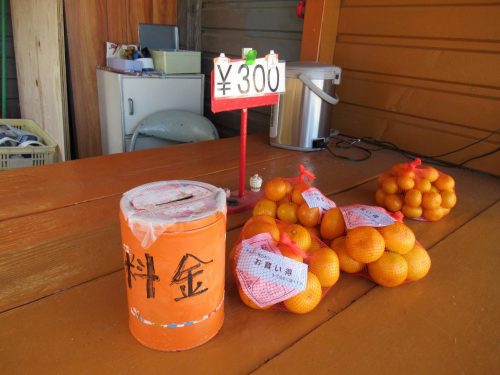
Finding the Fruit
The quickest and easiest way to access Etajima from Hiroshima is by ferry, and there are frequent services between Ujina Port on the Hiroshima side and the various ports on the Etajima side. Just board a number 1 or 3 streetcar from downtown and ride it to the terminus. From Hiroshima Station, there are the options of the number 1 or 5 streetcar; the number 5 will take you to Ujina faster whereas the number 1 will drag you through downtown first. Buying a round-trip ticket from the vending machine is easy as strawberry pie, but if you’re going to Etajima specifically to pick tangerines, you may want to inquire at the ticket counter about discounted packages that include a round-trip ferry as well as admission to the grove. There are two principal tangerine orchards on Etajima: Kawanishi Farm near Nakamachi Port and Kubo Farm right by Kirikushi Port. The discount package is available for fruit picking at either one, but since Kubo is only open on weekends and holidays while Kawanishi is open every day, I went for Kawanishi Farm on a typical Friday morning in late October, when tangerine season begins. No reservations are necessary unless traveling as a large group, in which case you’ll have to make a phone call (in Japanese).
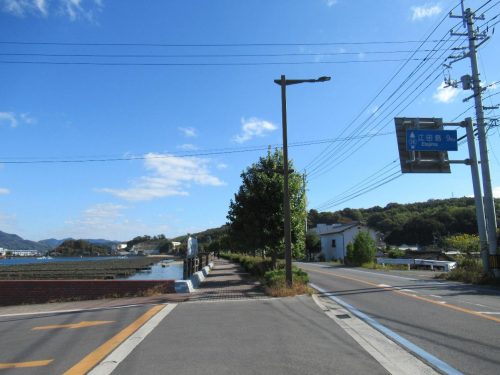
After disembarking from the ferry at Nakamachi Port, I turned left and followed the red brick road, hugging the fence by the sea so I could continuously glance out at the big, blue expanse. I passed by some buildings on either side as I trudged along, and when I had a big hospital to my left, I looked across the street to see a sunny yellow signboard and a flying kite shaped like a hawk, indicating Kawanishi Farm and its tangerine orchards. I darted across the street and walked up the slope to the entrance.
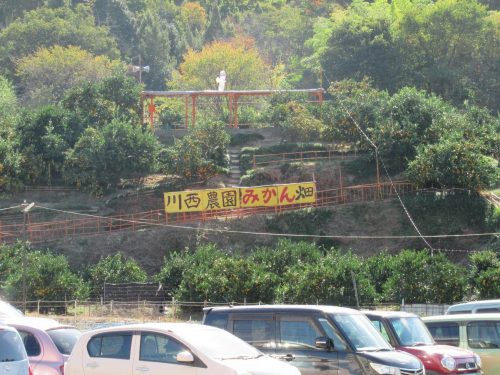
I was greeted by an unmanned stand selling tangerines by the bag–up to twelve plump, substantially-sized ones, or a countless number of miniature ones–for a mere \300! Doing some math, that means each tangerine cost \25; admission was \600 that day, so one would have to eat twenty-four tangerines to get one’s money’s worth. If you don’t plan to eat a bucketload of citrus on Etajima, it may be wiser to simply buy a bag to take home and eat in your hotel room, on the Shinkansen, et cetera. However, if you bought a combo ticket in Ujina, the pressure to eat that many tangerines is lessened due to the hundreds of yen you saved, so go in and eat what you can. In any case, proceed to the ticket window to present the tangerine segment of your combo ticket or buy admission, and you’re off to the groves!
Picking the Fruit
Just to clarify, this tangerine picking experience is an all-you-can-eat ordeal, NOT ALL-YOU-CAN-TAKE! Any fruit picked from the trees should be consumed right then and there, so don’t get any ideas about bringing the biggest bag to cram full of fruit. Those who insist on taking home freshly-picked tangerines should purchase a to-go bag from the counter; the bag should hold more than what was sold at the unmanned stand, but you’ll have to crunch some numbers to figure out if that’s a better deal than simply buying the bags of tangerines already assembled outside. On the plus side, visitors have no time limit one they’re inside, so they could technically stay until the farm closes at 4:00 p.m., which is more than enough time to eat enough tangerines to make your money back.
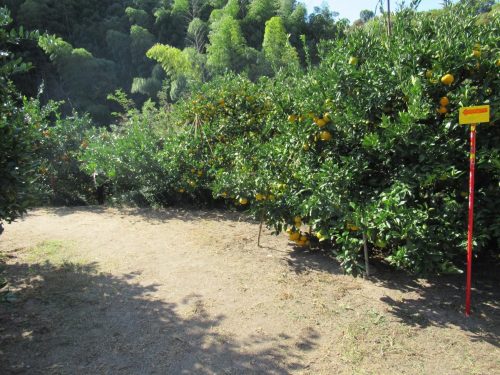
Guests can take a pair of plastic gloves and borrow a pair of shears before proceeding to the groves, and while they are recommended, I found I was able to pick fruit safely without them. There are sinks strategically placed throughout the farm, so visitors can rest easy knowing they can pick fruit with clean hands and wash the sticky juice off their fingers between tangerines. Upon entering the farm, I followed the red arrows to where the trees with ripe fruit were, and climbed up some stairs to a more secluded grove, away from the other guests.
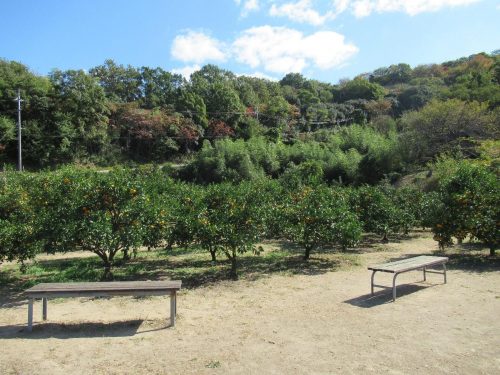
I placed my things on one of the benches and got straight to picking. I tried using the shears at first, and it results in beautiful, clean cuts as can be seen here.
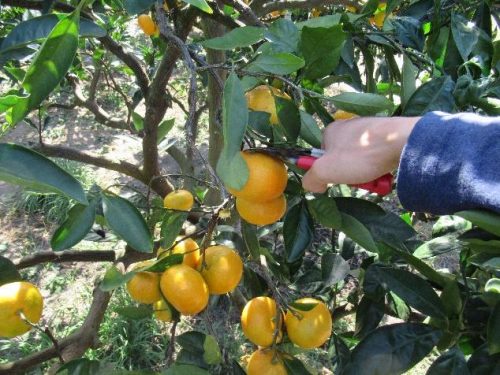
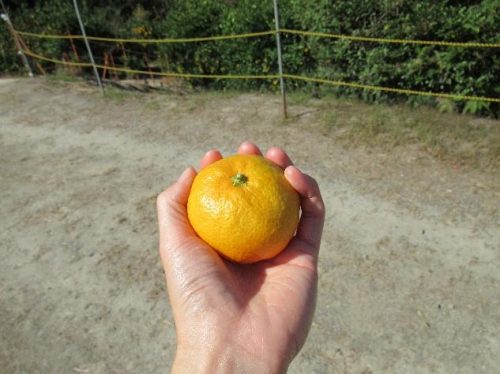
Cutting the stems like this makes the job easy, but it’s a slow way to pick tangerines, so I dropped the shears and started picking with my hands. One thing to note, though, is that simply yanking the fruit off the tree can get pretty ugly, for both the tree and the fruit.
It results in a bit of peel remaining on the branch, as well as a gaping hole in the tangerine. The fruit itself won’t look pretty, but hey, it’s easier to peel now!
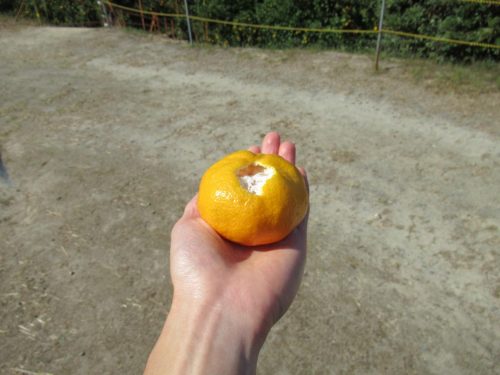
Moment of Joy: Savoring the Fruit
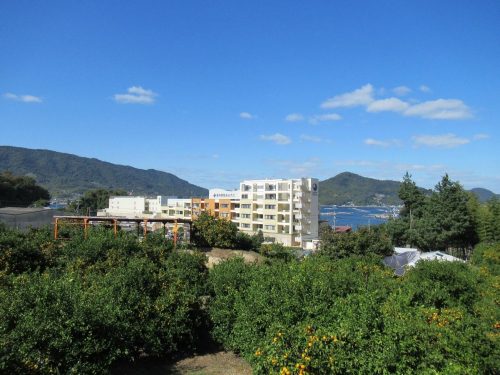
The whole time I was picking tangerines, I had this hilltop grove and the awesome view above all to myself (save for a few local kittens who live in a nearby shed). I fully exploited this solitude, eating tangerines on different benches to enjoy the scenery from multiple angles and taking in the fresh, island air. It was so relaxing that I truly could’ve stayed until 4:00 p.m., leisurely wolfing down as much fruit as I physically could. Alas, I did have other items on my agenda, so after finishing twelve tangerines (the same amount as what was sold outside), I called it quits and sought out some more fresh eats.
Frutti di Mare
While I’m on the topic of produce, let me remind everyone that Etajima is famous for its aquaculture scene in addition to its agriculture scene. Locally caught seafood can be shipped posthaste to the markets and izakaya on the island, so tourists are highly encouraged (not that they would need encouraging) to partake in the marine fruits harvested off of Etajima’s coast. In fact, I saw arrays of oyster rafts on my way to Kawanishi Farm, which made me all the more restless for when peak oyster season rolls around in the winter.
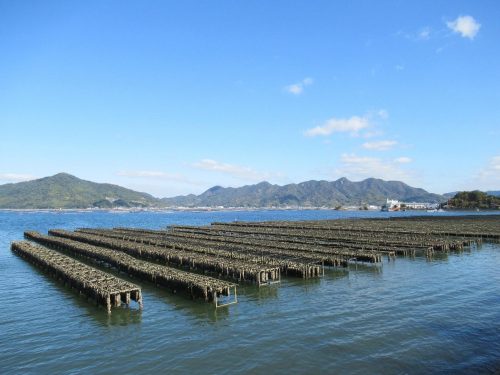
Twelve tangerines in one sitting can definitely spoil one’s appetite, so I decided to put off lunch for a couple hours and walk around the island until I was hungry again, which would take longer than I had expected. I continued to hug the seawall and crane my head to the left to gawk at the cerulean seascape right beside me. I eventually came upon the renowned seaside seafood market, which was open today; unfortunately, my stomach was closed. Guess I was going to have to drop by another day, but at least this gives me one more excuse to revisit!
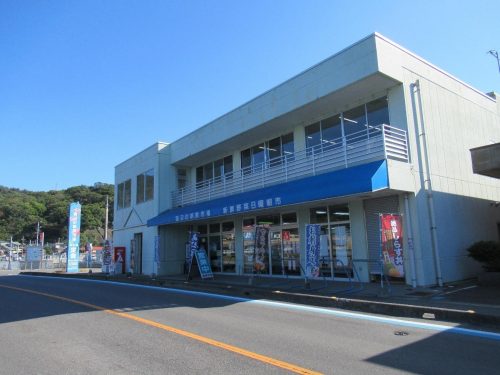
As tourist maps and guidebooks would point out, Etajima is also famed for its olives, and the presence of centuries-old trees scattered about the island testify to that. I had done a bit of research on the locations of olive orchards on Etajima, and decided to make one of them my next destination. It was far enough away to justify taking the bus (the best choice if you don’t rent a bicycle), but stubborn, full-bellied me instead opted to walk all the way there to ensure I would be hungry by the time I got there.
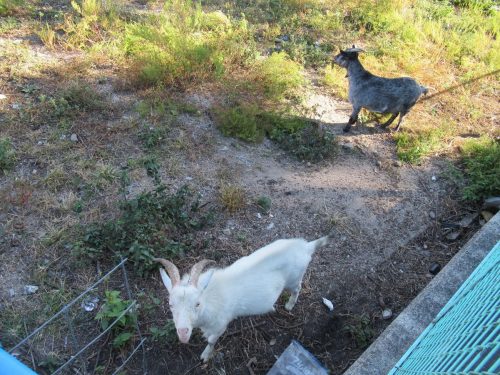
I walked past what seemed like miles of rustic scenery, all the while wondering when I would reach the olive orchard as my stomach started to grumble halfway through. During that long march, I happened upon two goats in a pen, one of which gazed at me with a profound curiosity, perhaps wondering if I was going to feed it. Perhaps it was my hunger talking, but after bidding farewell to the caprine critters, I wondered if those goats are being raised to be eaten, a terrestrial counterpart to the “fruit of the sea” that fishermen haul every morning.
Olive Factory
By the time I reached my destination, I was depleted of my strength (guess my body burns through tangerines faster than I thought) and it was far past most people’s lunch hour. The place where I would see an aggregation of olive trees in all their glory and have my afternoon meal (late lunch or early supper?) was a restaurant and souvenir shop called Olive Factory. As the name suggests, on top of being an Italian restaurant, Olive Factory is also the site where olives picked from the trees outside are processed and turned into olive oil and other olive-derived food products. October is olive harvesting season, but the employees pick the olives here, not the customers. Instead, diners have the option of sitting outside amongst the olive trees while enjoying delectable pasta and pizza, naturally enhanced with Etajima olive oil.
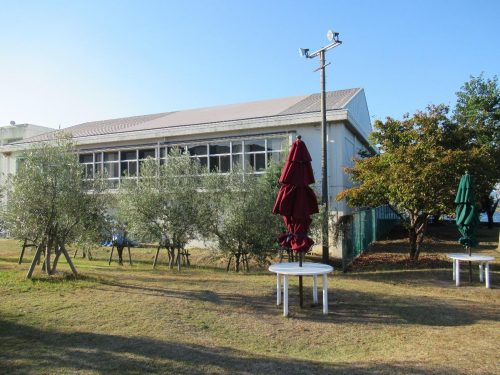
A word to the wise: if planning to have lunch here, do aim to be here at a conventional lunch hour. Their closing time was 4:00 p.m. when I visited, but their last order for restaurant food was actually 3:00 p.m., which I never expected. As I arrived later than that, they wouldn’t host me inside their restaurant and recommended that I pick up some snacks from the shop. I pleaded with them to let me buy a pizza to go, to which they graciously relented; the people on this island are seriously too generous. It didn’t take them long at all to whip up a margherita and stuff it in a box for me, and when the hot pie was in my hands I promptly got out of their hair. I took my pizza past the olive trees and close to the sea, where I seated myself and dug in. Buon appetito!
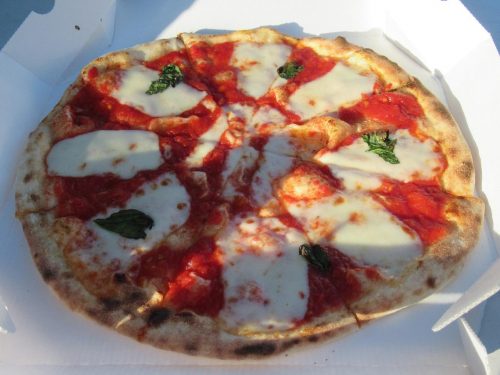
The crust was thin and soft, made in the same way as a pizzeria in Italy would’ve made it. Each slice was topped with a patch of gooey mozzarella, and although only five basil leaves accompanied the pie, five leaves combined gave the entire pizza an irresistible aroma that lasted the entire meal. Couple all that with the picturesque backdrop that was the Seto Inland Sea, and there really was no better way to round off my day.
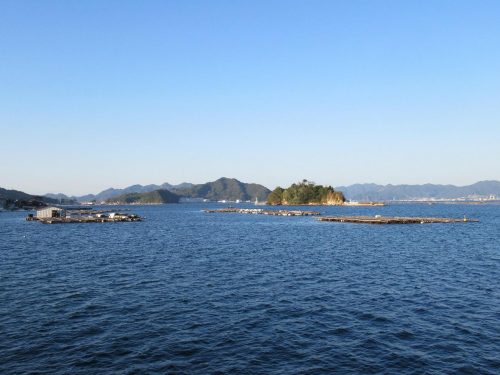
Just from this single visit to Etajima, I was able to taste a variety of fruits today: tangerines from the trees, tomatoes from the pizza sauce, and olives from the oil. The fruits that are in season vary throughout the year, so tourists can come any month and always look forward to some form of fresh produce. Regardless of season, just make sure to come on an empty stomach to maximize capacity; you’ll be thankful after stuffing yourself. Being able to see and try all the foods this island is known for may cost a pretty penny and take quite a bit of time, but you are paying for gorgeous food, vistas, and experiences, to take all the time you need. The nature and atmosphere of Etajima will make you lose track of time, so go ahead and lose yourself in the fruitful paradise of this bountiful island!





